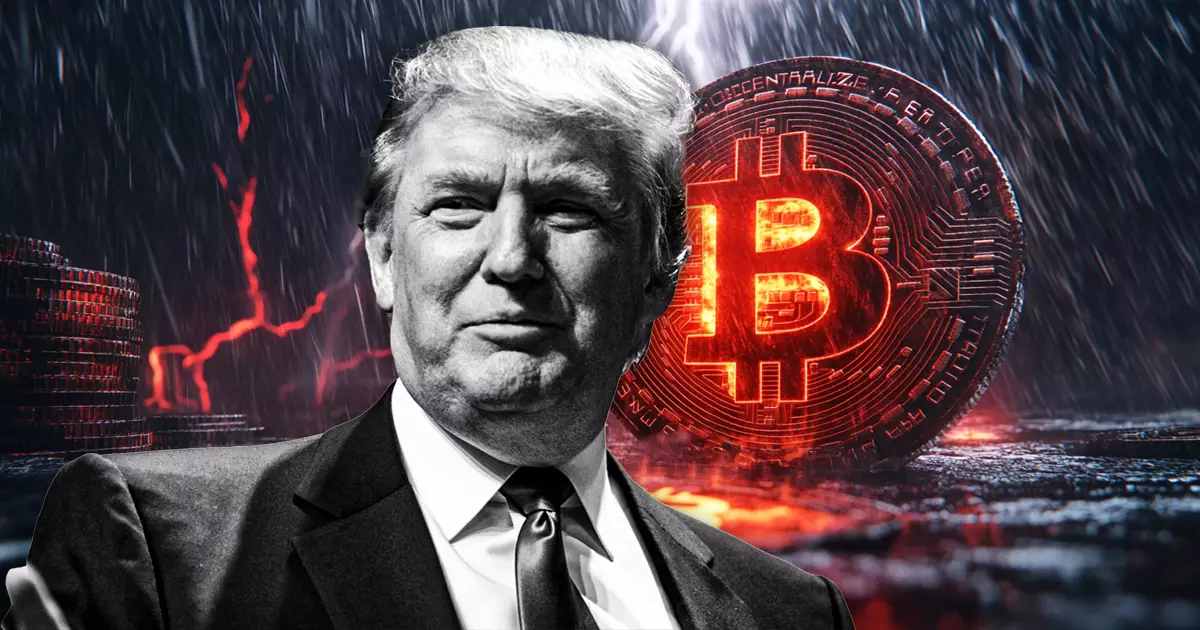The announcement from President Donald Trump regarding the establishment of a Strategic Bitcoin Reserve on March 6 raised eyebrows in both political and financial circles. The intention to create a government-backed digital asset stockpile is clearly meant to serve as a hedge against future financial uncertainties, but it is impossible to overlook the complex and potentially detrimental implications of such an intervention. This step signifies an aggressive move toward control within a sector traditionally celebrated for its independence from central authority.
By placing cryptocurrency under the Treasury Department’s management, the narrative of crypto as a decentralized alternative to traditional currency is starkly undermined. This executive order could initiate a slippery slope where market dynamics are heavily influenced, leading to an eventual risk of heavy-handed regulation. As the government steps into a role usually reserved for private enterprises, the level of trust in cryptocurrencies might decline, creating a paradox where a digital asset designed to liberate financial transactions from oppressive governance finds itself shackled under new bureaucratic oversight.
Market Uncertainty and Instant Reactions
The market’s instantaneous 5% drop following the announcement illustrates a critical vulnerability. Investors, evidently enamored by the revolutionary potential of digital assets, reacted with fear to the perceived hesitance of the federal government to actively acquire more Bitcoin for the reserve. This failure to assuage market anxiety not only highlights the volatility inherent in cryptocurrency investments but also reveals the pitfalls of relying on government action or inaction as a means of guaranteeing value.
The absence of a timeline and a clearly articulated strategy for expansion cultivates a sense of ambiguity and lack of confidence. Investors need clarity and projection in the fast-paced world of crypto, not the uncertainty that often accompanies government processes. This vague approach, focusing only on seized assets rather than proactive accumulation, sends a disconcerting message that leaves the market gasping for direction.
The Irony of Forfeiture
The prospect of building a cryptocurrency reserve based on assets seized through criminal activities is both ironic and troubling. Essentially, the government is opting to hold on to Bitcoin that has been captured under dubious circumstances rather than promoting lawful acquisition and trade practices. This not only raises ethical dilemmas regarding the origins of the asset but also may conflate the government’s role in promoting a tech-savvy financial environment with one that reluctantly deals with the remnants of illegal actions.
Furthermore, the designation of Bitcoin as the digital equivalent of Fort Knox — while appealing — raises questions about the actual efficacy of passive asset management. How can the government guarantee security and value designation if it takes little to no action in response to market dynamics? The very nature of Bitcoin’s value lies in its fluidity and market-driven forces, making passive retention already seem outdated before it even has a chance to be established.
Political Motives Behind the Push
Supporters tout this executive order as an emblem of a broader commitment to solidifying the U.S.’s prominence in digital assets, though one must consider the underlying political motivations. This “crypto capital” vision is tantalizing, yet it is tied tightly to the administration’s ambitions, leaving one to wonder whether this move is strategically self-serving. The rhetoric suggesting Trump fulfills campaign promises to foster innovation may oversimplify greater national economic challenges that demand more strategic thinking than merely increasing Bitcoin holdings.
The administration’s pursuit of global digital asset leadership borders on naive optimism if one disregards ongoing regulatory hurdles that will inevitably arise. Congressional oversight could render this initiative ineffective or transient, undermining the commitment to integration. To claim crypto innovation as a priority while simultaneously navigating a minefield of bureaucracy can lead to contradictions that market participants will be quick to seize upon.
The Future of Passive Holdings in a Volatile Market
With the government pledging not to sell any Bitcoin in reserve, the rationale appears sound on the surface: avoid past errors of premature sales that could lead to missed opportunities. However, the reality of this passive holding approach raises serious concerns about exposure to market volatility. The cryptoverse is famed for its rapid fluctuations, making the lack of active management a significant risk.
Without robust strategies for responding to market changes, the reserves could face significant depreciation, rendering their protective purpose ineffective. The ethos of cryptocurrency revolves around agility and adaptation, qualities that may clash fundamentally with government interests and methodologies. Denying sales completely while lacking preemptive purchasing strategies simply feels out of touch with an ever-evolving financial landscape that requires real-time responsiveness.
The ramifications of the recent executive order extend far beyond mere asset accumulation; they underscore a broader debate about government involvement in a marketplace meant to escape traditional financial shackles. As we move forward, the implications of this decision will undoubtedly resonate within the crypto community and the market at large, revealing stark choices amid uncertainty.














